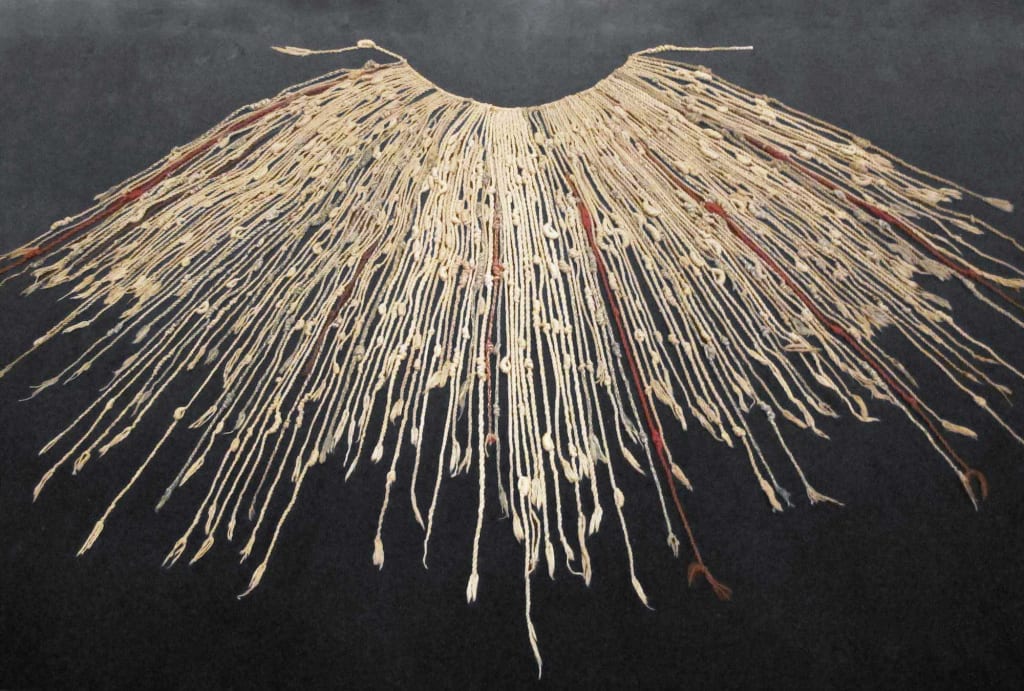Incan Quipu: Decoding the Ancient Andean System of Information and Communication
History

The Incan quipu stands as a unique and enigmatic artifact of ancient Andean civilization, showcasing the sophisticated system of record-keeping and communication developed by the Inca Empire. Comprising knotted strings made from llama or alpaca wool, the quipu served as a method of accounting, census-taking, and historical documentation. Each knot's position, type, and color conveyed specific information, demonstrating the Incas' advanced understanding of numerical and symbolic representation. Despite the Spanish conquest's disruption, quipus continue to fascinate researchers, offering insights into pre-Columbian South American culture and intellectual achievements.
The quipu's construction involved intricate knotting techniques, with different types of knots and spacing conveying various meanings. Primary cords, often dyed different colors for categorization, served as organizational anchors, while pendant cords and subsidiary cords held numerical and other data. The use of quipus extended beyond administrative purposes, as they were also employed in ritual contexts and possibly served as mnemonic devices for oral traditions and storytelling.
The study of quipus has revealed a complex hierarchical system of information storage, where certain knots represented units, tens, hundreds, and so forth, akin to a base-10 numerical system. This organizational structure facilitated the management of vast territorial holdings, administrative duties, and tribute collection across the expansive Inca Empire, which spanned much of western South America.
Spanish colonial records and indigenous accounts indicate that quipus were read aloud by specialists known as quipucamayocs, who could interpret the knots' meanings through a combination of tactile memory and visual inspection. While the exact semantics of quipu knots are still debated among scholars, their utility as a method of recording information and communication within the empire is widely acknowledged.
The discovery of quipus in archaeological contexts across the Andes, including burial sites, administrative centers, and sacred spaces, underscores their central role in Incan society. Their presence in diverse geographic and cultural settings suggests a standardized system of communication and administration, essential for maintaining social cohesion and imperial governance.
The legacy of quipus extends beyond their practical application, as they embody the Incas' cultural and intellectual achievements. Their existence challenges Western notions of writing and literacy, highlighting alternative forms of knowledge transmission and memory preservation that persisted alongside and intersected with oral traditions. Quipus serve as a tangible testament to the sophisticated intellectual capabilities of the Inca civilization, showcasing their innovative approach to communication and record-keeping. By recognizing the intricate encoding of information in these knotted cords, researchers continue to explore how ancient societies conceptualized and transmitted knowledge, offering a broader perspective on the diversity of human cognition and cultural expression throughout history.
In recent years, advancements in technology, such as 3D scanning and digital imaging, have enabled researchers to analyze quipus with greater precision and detail. These methods offer new opportunities to decode their intricate structures and unravel additional layers of information embedded within the cords, potentially shedding light on unresolved questions regarding Incan history and governance. By employing these cutting-edge techniques, scholars can reconstruct virtual models of quipus, examine minute details of knot configurations, and explore correlations between different quipus found across diverse archaeological contexts. Such advancements hold promise for deeper insights into the cultural practices, economic systems, and administrative techniques of the Inca Empire, enriching our appreciation of their sophisticated civilization.
In conclusion, the Incan quipu represents a sophisticated system of information storage and communication that played a pivotal role in the administration and cultural life of the Inca Empire. As a testament to indigenous ingenuity and resilience, quipus continue to captivate scholars and inspire ongoing research into their meaning and significance. Their study not only enriches our understanding of ancient Andean civilizations but also challenges conventional notions of literacy and record-keeping, highlighting the diversity and complexity of human intellectual achievement across different cultures and time periods. The quipu's enduring legacy prompts us to reconsider how ancient societies encoded and transmitted knowledge, offering a profound glimpse into the cultural richness of pre-Columbian South America.
About the Creator
Marveline Merab
“History never repeats itself. Man always does.”
― Voltaire
Enjoyed the story? Support the Creator.
Subscribe for free to receive all their stories in your feed. You could also pledge your support or give them a one-off tip, letting them know you appreciate their work.






Comments (1)
Wow